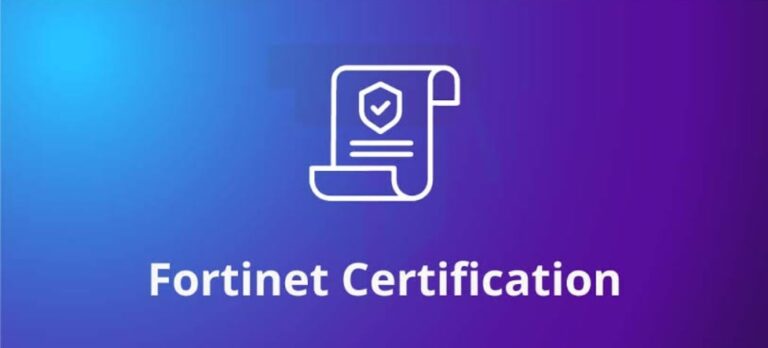Understanding Hacker Motives and Actions Post-Infiltration
Asenqua Tech is reader-supported. When you buy through links on our site, we may earn an affiliate commission.
With a digital infrastructure that’s constantly expanding and evolving, the importance of cybersecurity has skyrocketed. This is not just about preventing attacks but also about comprehending the consequences when defenses are breached. Understanding the hacker’s journey beyond the initial infiltration gives us valuable insight into securing our digital future. An educational video explaining hackers with FortiDeceptor offers a deep dive into the intricacies of cyber threats that users may find helpful. Although we must avoid focusing solely on this video, it provides a starting point for understanding the sophisticated dance between cybersecurity experts and hackers.
Key Takeaways:
- Insight into what cybercriminals do after they breach systems.
- Understanding the consequences and long-term impacts of data breaches.
- Proactive measures and responses are essential for cybersecurity.
- Exploring the dark web’s role in the dissemination of stolen data.
Table of Contents:
- Introduction to Cybersecurity Breaches
- Analyzing Hacker Behavior: What Happens After the Breach?
- The Aftermath: Consequences of a Cybersecurity Breach
- Cybersecurity Best Practices: Mitigating the Risk of a Breach
- Recovery and Response: Action Post-Breach
- Understanding the Dark Web and Hacker Forums
- The Role of Government and Law Enforcement in Combating Cybercrime
- Emerging Threats: Staying One Step Ahead of Hackers
- Personal Data Security: What Individuals Can Do
- Conclusion: Building a Culture of Cybersecurity Awareness and Preparedness
Introduction to Cybersecurity Breaches
Understanding the nature of cybersecurity breaches is the first step towards defending against them. A breach can occur at multiple levels and have various entry points, ranging from sophisticated cyber threats to simple human error. It often starts with identifying vulnerabilities in a system, which hackers quickly exploit using well-planned strategies. Once they have bypassed security protocols, they have achieved what is known as a ‘breach,’ opening up Pandora’s box of potential risks and thefts.
Analyzing Hacker Behavior: What Happens After the Breach?
Once inside, hackers may covertly navigate a network, often undetected, to gather as much sensitive data as possible. They could implant software to damage the infrastructure or create backdoors for easy re-entry in the future. Some breaches are smash-and-grab, with hackers exfiltrating valuable data as quickly as possible. In contrast, others are more insidious, with hackers remaining within systems to glean data over extended periods. Understanding their behavior is crucial because it informs the development of effective defenses and countermeasures against future infiltrations.
The Aftermath: Consequences of a Cybersecurity Breach
A data breach can cause immediate and severe damage to an organization’s financial health and reputation. Customers may lose trust, leading to a decline in business, while regulatory bodies may impose hefty fines and sanctions. Over time, the affected organization may face increased security costs and even lawsuits, making the recovery long and expensive. This underscores the essential role of proactive cybersecurity in precluding such costly scenarios.
Cybersecurity Best Practices: Mitigating the Risk of a Breach
Organizations must implement a comprehensive set of security practices to mitigate the risks of a breach. These include regularly updating software, safeguarding against malware with quality security systems, and conducting routine security audits. Organizations can create a resilient protective barrier that deters even the most persistent hackers by adopting a multi-layered security approach. It’s not just about defense—crafting a responsive, agile cybersecurity ecosystem that can evolve with new threats.
Recovery and Response: Action Post-Breach
Organizations must quickly activate their incident response protocols after a breach. These include identifying the breadth of the breach, containing the threat, and mitigating any damage. At this stage, having cybersecurity insurance helps businesses manage the financial repercussions. At the same time, they work to fortify their systems, recover stolen data, and restore their operations and reputation.
Understanding the Dark Web and Hacker Forums
The secretive realms of the dark web often serve as the subsequent destination for stolen information. Hackers sell and trade confidential data in the growing marketplaces and forums within the dark web. An insightful article about the after-market of breached data highlights the structure and trends of this clandestine community. By dissecting these trends, professionals can begin to anticipate future attacks and prepare more effective defenses.
The Role of Government and Law Enforcement in Combating Cybercrime
The complexities of cybersecurity necessitate a strong legal framework and committed government involvement. Authorities diligently pursue cybercriminals, often across borders, relying on sophisticated tools and international cooperation. To keep abreast of the evolving digital environment, the law continues to develop, with organizations such as the United Nations working to establish consensus on norms of behavior in cyberspace.
Emerging Threats: Staying One Step Ahead of Hackers
The dynamic landscape of cyber threats mandates ongoing vigilance and preemptive measures. As technology evolves, so too do cybercriminals’ tactics, who now have access to advanced tools like AI and machine learning. These tools could be harnessed to automate attacks or dynamically adjust strategies based on machine learning algorithms. Therefore, staying ahead requires organizations to keep not just one but several steps ahead of hackers by integrating advanced analytics, threat intelligence, and robust incident response strategies into their cybersecurity protocols.
Personal Data Security: What Individuals Can Do
While organizations deal with large-scale threats, individuals also have a significant role in maintaining cybersecurity. Regular updates, strong passwords, and vigilance against suspicious links can prevent many standard hacking attempts. Additionally, individuals must understand the importance of cybersecurity in their professional and personal lives, strengthening the overall security culture.
Conclusion: Building a Culture of Cybersecurity Awareness and Preparedness
To conclude, a holistic approach towards cybersecurity is needed, which involves building a culture of awareness, education, and preparation. Whether through sharing knowledge within communities or through organizational training, being prepared is the cornerstone of a solid defense against cyber threats. Committing to this mindset and fostering a proactive security culture ensures that when breaches happen, the response is quick, the damage is controlled, and recovery is swift and effective.




![[Solved] Wireless Caller displayed instead of phone number](https://asenquavc.com/wp-content/uploads/2022/05/Blog-Header-1200x600-px-2-768x384.jpeg)

